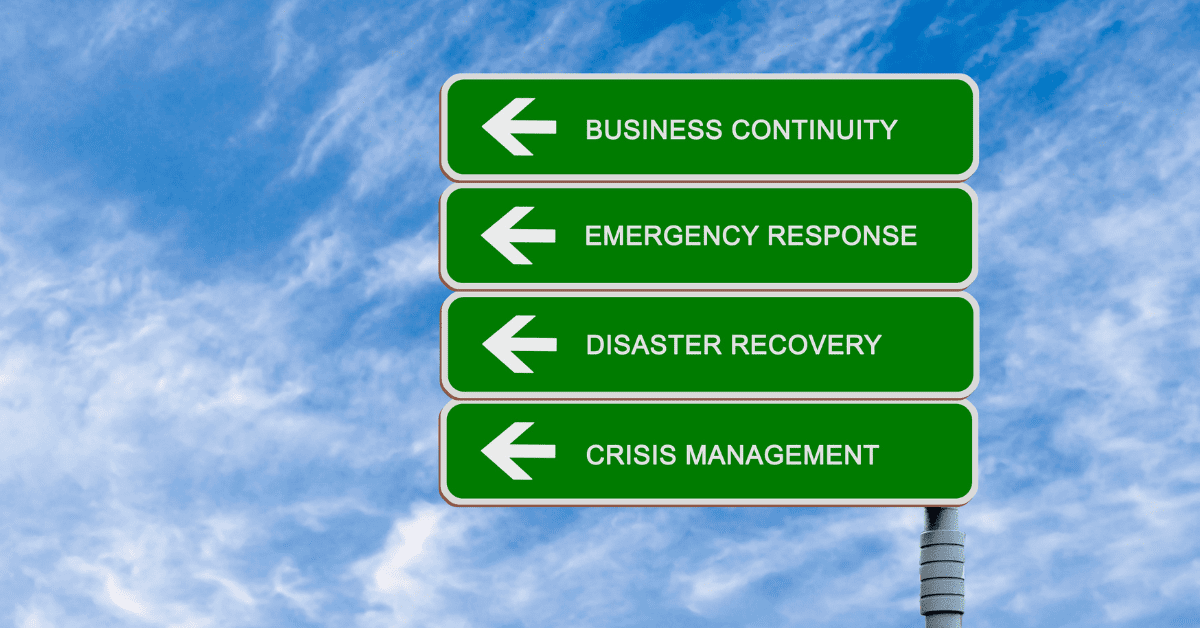
It’s typical to think of your home when it comes to emergency preparedness, but your business should also have a plan and procedures in place to ensure it can recover from natural disasters as well.
Having an emergency preparedness plan can make the difference between staying in business afterwards or losing everything. According to FEMA, 40 percent of small businesses won’t reopen after a natural disaster, while another 25 percent close a year later. Three years later, 75 percent of businesses without a continuity plan will fail.
While some types of disasters can be prevented, natural disasters often place you at the mercy of Mother Nature so it’s best to do everything in your power to mitigate the damage before disaster strikes.
Assess Your Risks
Each company has its own set of vulnerabilities and weaknesses, so conducting regular audits and system checks can help identify your specific risks. Analyze different potential threats, the likelihood of them happening and the business impact of a particular disaster. For instance, if you’re based in the middle of the country, creating a hurricane preparedness toolkit isn’t the best use of your focus, but crafting response plans for tornadoes and flooding is wise as these natural disasters that can impact your community.
Some of the questions you need to ask include:
- Can your organization operate without computers, files, special equipment, gas, power, internet, water, etc.?
- Can you operate without access to the damaged building?
- Can you meet payroll if your business income is interrupted? For how long?
- Are you communicating status with employees, key customers, vendors and suppliers throughout your recovery?
- Can your organization survive losses if closed or inaccessible for three to seven days?
Create a Plan
Once you’ve highlighted the possible impacts on your business, develop solutions to reduce your risks. The Ready Business Program suggests focusing on staff, surroundings, space, systems, structures and service.
Staff includes planning and preparedness activities for the protection of your staff. Surroundings are land-use decisions. In the case of flooding, this could be deciding to construct a flood wall or levee. Space refers to areas of the workplace that could be affected by an event, while systems include utility systems that support the operation of the building. Structure refers to the structural elements of the building that may be vulnerable to damage or failure during an event.
Service applies to opportunities to serve the community after an event. Some of the ways your organization could provide community service to others after a disaster include distributing disaster relief kits, becoming a volunteer charging station if you have electricity afterward, or helping clean up debris.
Depending on which natural disasters you are focused on, there are a number of government resources that highlight specific ways to prepare for the different types of weather events that can occur. Check out sites like ready.gov and DRB Toolkit for various preparedness guides for threats like hurricanes, flooding, tornadoes, earthquakes and more.
Take Action
Some of the recommended practices to take care of well before a natural disaster occurs include protecting vital business records, creating backup copies of critical data and programs, and reviewing your insurance coverage. Also take stock of your business equipment. The IRS has disaster loss workbooks for businesses that can help you compile the market value of your company’s machinery for insurance and casualty loss claims.
Your important business records should be stored in a safe that is listed by UL as resistant to fire, heat, burglary and torches. Meanwhile, your backup copies of data need to be stored in a separate location from your primary facility. Take the time to review your insurance policy and understand the nature of your coverage. There are many different types of coverage with various limitations and exclusions.
Workplace training should be conducted regularly as you bring on new team members and to keep your emergency procedures top of mind for veteran employees. Conducting drills can also help identify any issues in your emergency preparedness plan.
Review your emergency plans annually because as your business changes, so do your preparedness needs.

